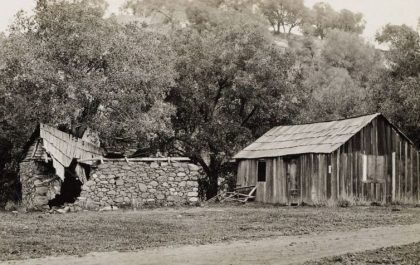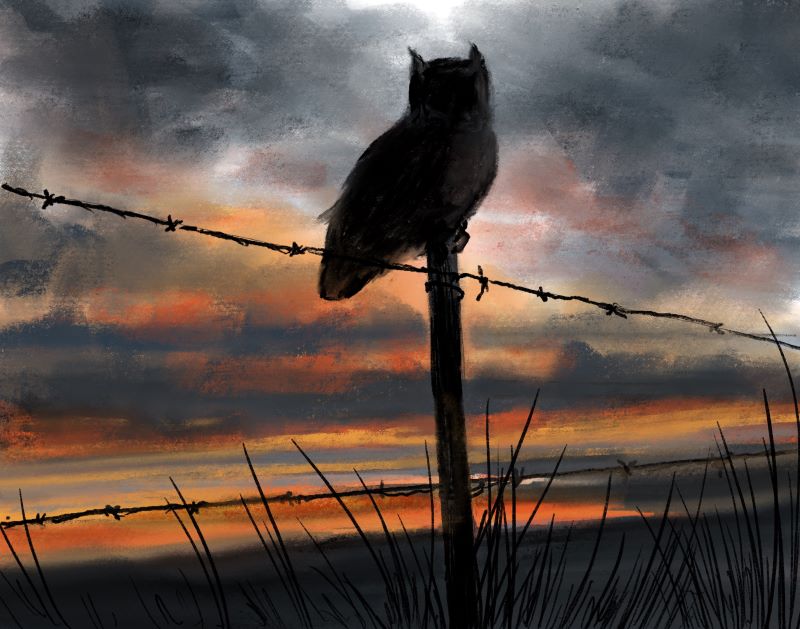
All watercolor illustrations by Suzanne Guldimann
Have you ever sat in the garden on a summer night and heard the somber oboe duet of the great horned owls performed in stereo from the tops of the tallest trees? Have you ever seen the pale, ghostlike barn owl illuminated for a moment in the headlights of the car, or heard the muted chuckle of the screech owl from the oak tree in the backyard? Those encounters are as close as most of us ever get to the nightbirds who make their home in the Santa Monica Mountains, but even if they are seldom seen, these birds are an important part of the local ecology.
There are three common nocturnal species of owl in the local mountains. The great horned owl, Bubo virginianus, makes its presence known with its vocalizations—a wide range of shrieks, whistles, and the classic hooting sound associated with all owls, even the ones that don’t hoot. A polite discourse of “who? who-who? Who, who!” can go on for hours. Great horned owls will often reply if one drops into their conversation with a polite “who?” (although it is important to keep the conversation short, and let them go about their business).
Great horned owls like a high vantage point, and can often be seen silhouetted against the sky at the top of a favorite tree, post, pole, or roof ridge. They aren’t shy about humans, and will often nest in a neighborhood tree. Great horned owls prefer to use the nests of other birds or tree squirrels, and have been known to successfully evict much larger birds, including eagles. Why do all the work if someone else will do it for you?
This is a powerful bird that can tackle prey bigger than itself—skunks are a favorite menu item—but rodents make up most of its diet. In Topanga, it’s not unusual to find great horned owl cough pellets full of rat, mouse, and gopher bones, but this owl also dines on birds—including large ones like ducks and coots. This species has also been documented hunting for frogs, crawfish, snakes, and even scorpions. Powerful talons help the great horned owl subdue even the most feisty prey—but they can also eat carrion, if that’s all that is available.
Although the great horned owl’s silhouette resembles a large cat in shape and size, most of its bulk—including the distinctive ears tufts—is made up of feathers and insulating fluff. The actual bird only weighs a few pounds. This is an intelligent, adaptable, long-lived species. There is a good chance that the owls one hears in the garden are the same ones, year after year. GHOs can live to be more than 20 years old, and pairs usually mate for life. Young owls sometimes stay with their parents to help raise the next brood and learn parenting skills before heading out on their own.
The ability to eat a wide range of prey has helped the great horned owl adapt to a wide variety of environments—even urban ones. This species is found from Northern Canada to South America, and it is the most frequently encountered owl in the Santa Monica Mountains.
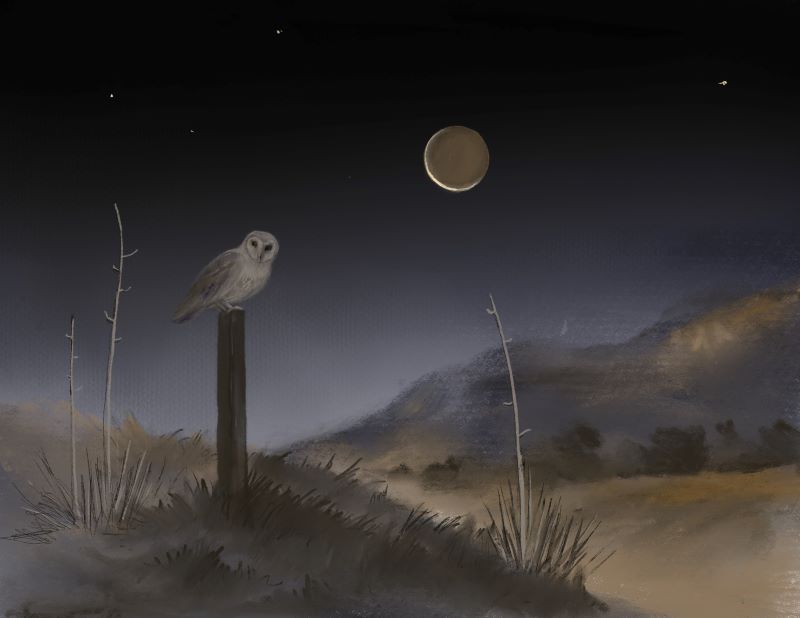
The barn owl has an even more extensive range than the great horned owl, but it is less often seen. This species is found worldwide and is one of the most widely distributed of all birds. The scientific name, Tyto alba, means simply “white owl,” and the pale features of the barn owl make it easy to spot when it is on the wing. Barn owls are often fearless about humans, choosing nest sites in old buildings and taking advantage of fence posts to perch on.
This is a highly efficient predator that preys primarily on rodents, including mice, voles, gophers and rats. During breeding season, a pair of barn owls raising young ones can dispatch more than a thousand rodents, sometimes caching a supply to keep rapacious nestlings happy and quiet.
Unlike great horned owls, barn owls don’t hoot. Instead, they communicate with clicks, hisses, and a banshee-like shriek that can last for a couple of seconds. Mated or courting pairs have a softer version of the call described as a purr.
Because they fly low, barn owls are at risk from vehicle strikes. They are also highly vulnerable to rodenticide poisoning. Urbanization also threatens the barn owl, despite its ability to coexist with humans in a more rural environment.
Barn owls aren’t as long-lived as great horned owls, perhaps because their existence is more perilous, but they can live to be as much as 15 years old, and a mated pair will return to their favorite nesting site year after year. Specially designed barn owl boxes offer a way for humans to help this species, but finding the right location for the box is essential, because the boxes also attract bees.
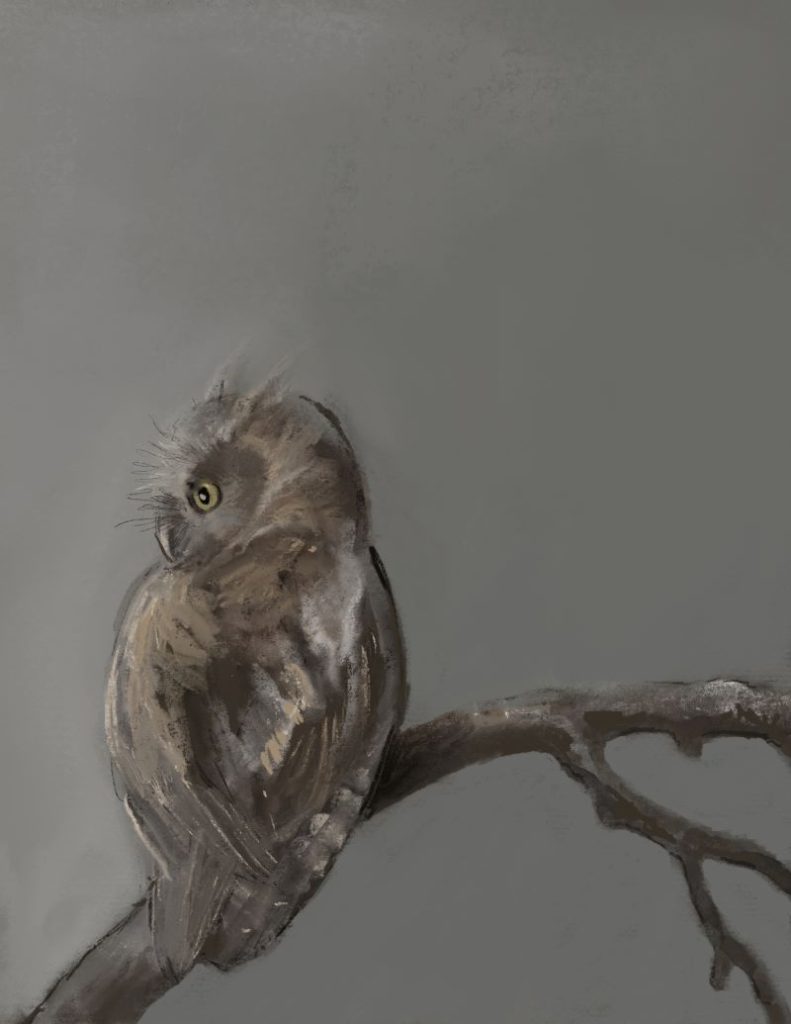
The Western screech owl, Otus kennicottii, also makes its home here—sometimes right in the backyard. This small owl is no bigger than a large songbird and has cryptic coloring that makes it blend in perfectly with the oak trees that are its preferred habitat, and makes it hard to spot even in daylight. One is much more likely to hear a Western screech owl then see it. Its call is a distinctive series of between five and nine hoots, more whistle-like than the great horned owl, but still distinctively owlish.
In the Santa Monica Mountains these little owls depend on native oak woodland for survival. It’s rare to encounter them in urban areas or on the coast, but Topanga still offers the kind of habitat they need.
Although it’s only a little bigger than a robin, the Western screech owl is a formidable hunter that preys on rodents—sometimes nearly as big as itself, but also eats rabbits, bats, insects, reptiles and sometimes even slugs and snails.
The Western screech owl nests in the cavities in mature trees. Like the barn owl, the Western screech is often glad to take advantage of a backyard nest box. The longest lifespan recorded in the wild for this species is 14 years.
The National Park Service species checklist for the Santa Monica Mountains includes the long-eared owl, Asio otus, but all the evidence suggests that this species, which is on the state special concern list, is extirpated throughout all except perhaps the most remote parts of the local mountain range. There’s a diurnal owl here, too: the burrowing owl, Athene cuniculari, but this little owl is active during the day, and is not one of the species whose calls wake one from sleep.
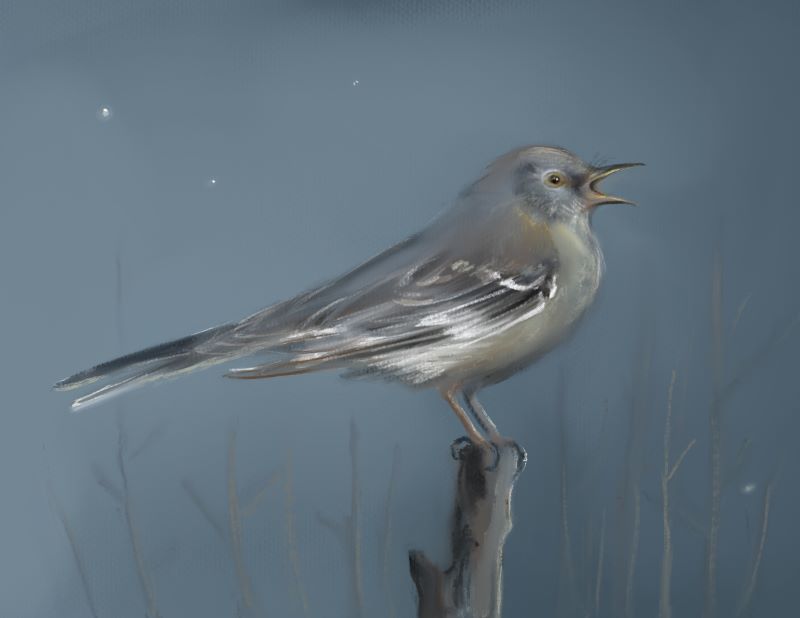
Owls and nightjars are true nightbirds, living nocturnal lives, but the Northern mockingbird, Mimus polyglottos, deserves an honorary membership in the nightbird club. This diurnal songbird sometimes chooses to sing all night long—often right outside the bedroom window.
Peak nocturnal activity occurs in the spring, but mockingbirds can give midnight concerts anytime during the summer—the nocturnal singer is usually a bachelor advertising for a mate. Northern mockingbirds are smart. They have the ability to learn new sounds throughout their lives, and can imitate other birds, but also noises like car alarms and ringtones. A male mockingbird can learn as many as 200 songs. Females are less musically inclined but also have an extensive range of songs.
While humans sometimes find this singer annoying, the song is a reassuring sign that the local mockingbird population is alive and well. That isn’t the case everywhere. This charismatic and musical bird is experiencing an alarming decline in many parts of its range.
Topanga remains a refuge for nightbirds, and residents can help keep it that way by using downward-facing, dark sky compliant lighting, eliminating the use of pesticides, and valuing and preserving native vegetation. Tolerance is helpful, too. A little lost sleep is a small price to pay for having wild birds like these for neighbors.



